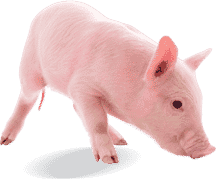Problem of diarrhea in pigs

Is it possible to avoid diarrhea in pig fattening?
To avoid health problems such as diarrhea, it’s essential to consider several important factors such as adequate heating, stable humidity, and sufficient ventilation.
The ideal temperature
Insufficient heating can lead to cold conditions in pig housing facilities, which can weaken the animals’ immune systems and increase their susceptibility to infections, including those of the digestive tract.
The ideal temperature can vary depending on factors such as animal age, climatic conditions, and specific production targets. However, the general recommended temperature range for pig feed rooms is between 20°C and 25°C.
The ideal temperature for newly weaned piglets
A higher temperature of around 26°C to 28°C can be maintained for the first few days to help piglets adapt to their new environment and foster their comfort. Thereafter, the temperature can be gradually lowered as piglets grow and develop the ability to regulate their body temperature.
Humidity
Unstable humidity can also negatively impact animal health. Excessive humidity can encourage the growth of bacteria and molds, increasing the risk of diarrhea and other digestive issues. Conversely, humidity that is too low can lead to excessive drying of mucous membranes, making animals more vulnerable to infection.
It is therefore important to monitor the relative humidity in pig feedlots. An appropriate humidity level, generally between 50% and 70%, is necessary to avoid animal health and welfare problems.
Depending on your region
It’s always advisable to consult local pork production experts or specialized agricultural organizations for recommendations specific to your region and your particular production system, as conditions may vary according to climate, farm size, and other local variables.
Ensure ideal, stable temperature with a GENIUS control



